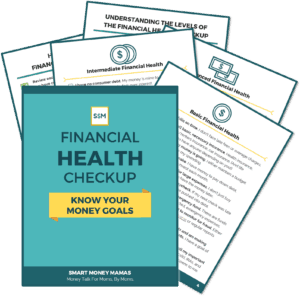Saving for retirement when you’re traditionally employed is pretty straightforward. But when you run your own business? Things get more complicated. Luckily, you have options. And my friend Justin Pritchard, a CFP® (Certified Financial Planner), has stopped by to help us break them down.
When you work for a large company, a Human Resources department takes care of everything from healthcare to the 401(k) plan. But if you run your own business, you typically do the work that brings in revenue as well as handling “employee benefits” for yourself. With everything else on your plate, a retirement plan may never make it to the top of your to-do list.
Fortunately, saving for retirement as a business owner doesn’t need to be complicated. Hopefully, this page helps to clarify the options available to you and inspires you to take action.
Table of Contents
Types of Retirement Plans for Self-Employed Individuals
As a self-employed individual, you have several choices available. The right plan for you depends on what you want to do and how your business works. As a preview, we’ll cover the following topics in this article:
- Individual Retirement Accounts (IRAs)
- Solo 401(k) plans
- Simplified Employee Pensions (SEPs) and Savings Incentive Match Plan for Employees (SIMPLEs)
- 401(k) plans for businesses that employ non-family-members
- Other types of accounts
As a bonus, we’ll look at how you can use a health savings account (HSA) for potential triple-tax benefits. Healthcare will most likely be a significant retirement expense, so it makes sense to plan accordingly.
How Much Do You Want to Save?
If you’re already overwhelmed by the list of options, there may be an easy way to choose the right retirement program: Decide how much you plan to save each year for retirement. If the amount is less than the maximum IRA limit (in 2018, that’s $5,500 for savers under age 50), an IRA may be all you need.
Ideally, you’ll calculate how much you need to save to reach specific retirement goals. But nobody has unlimited funds. Most of your income may go into growing your business, supporting your family, and other more-immediate needs. If your budget only allows for modest savings, start there—saving something is better than saving nothing.
Traditional IRAs
Traditional IRAs may allow you to make pre-tax contributions. Doing so reduces your tax burden in the year you contribute, making it easier to afford those contributions. Earnings grow tax-deferred, but you generally have to pay income tax on funds that you pull out of traditional accounts later (at whatever tax rates happen to be when you take the distribution).
Traditional IRAs may make the most sense when you believe you’re in a high tax bracket now, with the potential to take income at lower rates in retirement.
Roth IRAs
Roth IRAs are for after-tax savings, allowing you to prepay your taxes. If all goes well, and if you follow all IRS rules, you may be able to take tax-free withdrawals from your Roth IRA in retirement. That can be helpful if tax rates are higher for any reason when you retire, or if you just want to know that you can spend from the account without budgeting for taxes.
Roth IRAs also allow you to take your own contributions back at any time without any penalty or taxes due. That only applies to amounts you contribute—not earnings in the account—but that option can provide flexibility in an emergency.
Within the retirement plans below, you can typically contribute (sometimes to both Traditional and Roth accounts) even if you have a high income. What’s more, you may be able to use the plans below and save a little extra in an IRA.
Solo 401(k): A Versatile Option
One-person 401(k) plans are powerful and flexible. Solo 401(k) plans are available to self-employed individuals and those who only employ certain immediate family members.
High contribution limits: An owner-only 401(k) allows you to contribute up to $18,500 of your income for 2018. That amount can go in as either pre-tax or after-tax (Roth) savings. Or some combination of both. You can also make profit-sharing contributions of up to 25 percent of compensation.
When you combine your salary-deferral and profit-sharing contributions, you can contribute up to $55,000 total in 2018. What’s more, those over age 50 can make an additional catch-up contribution of $6,000.
Loans: Your Solo 401(k) plan can also allow for loans. It’s generally wise to avoid raiding your retirement savings, but loans can provide a “safety valve” when emergencies happen. Just be sure to repay the loan on time to avoid triggering tax liabilities.
Year-end deadline: You must establish a Solo 401(k) plan by December 31st of the year in which you want to contribute. That may be new to you if you’re accustomed to making prior-year IRA contributions until April. You can still contribute to your Solo 401(k) after year-end—but you need to set up the plan on time before doing so.
SEPs and SIMPLEs: Easy Small Business Plans
For self-employed individuals, a Solo 401(k) does virtually everything a SEP or SIMPLE can do—and then some. But when you have employees who are not family members, you may need more options that don’t involve the costs and responsibilities of a full-blown 401(k) plan. If that’s the case, two alternatives are worth looking at.
SEP-IRAs
SEP-IRAs are profit sharing plans that use IRA accounts for funding. You can contribute up to 25 percent of compensation, and contributions you make to your staff may be tax-deductible business expenses.
SEPs have long been a tool that tax-preparers show clients who learn about significant tax bills from a previous year (when it’s too late to do much). You can establish and fund a SEP for a prior tax year, within certain limits, and you don’t need to contribute every year. Several things to know about SEPs include:
- Everybody’s equal: You’re required to make the same contribution to all employees. If you want to save 20 percent of compensation for yourself, you generally must give that same 20 percent to all other eligible employees.
- Free money: Once employees receive your contribution, it’s theirs free-and-clear. They can withdraw the money or move it elsewhere immediately, although they may have to pay taxes, penalties, or other fees if they do so. In other words, there’s no vesting schedule to encourage employees to stay on board (or stay invested) for the long term.
SIMPLE IRA
A SIMPLE IRA plan allows you to make meaningful pre-tax contributions without meeting the requirements of a 401(k) plan. For 2018, you can reduce your salary by up to $12,500 (with an extra $3,000 catch-up available to those over age 50). These plans are relatively easy and inexpensive to operate, but a few key details include:
- Annual requirements: You’re generally required to contribute to eligible employees’ accounts annually. You can choose between a 3 percent match and a 2 percent “nonelective” contribution (which everybody gets, whether or not they contribute). For most years, you need to make that choice ahead of time and notify employees 60 days before the year begins.
- Exclusive plans: SIMPLEs restrict your ability to establish other retirement plans in the same year. If you decide to start a 401(k), you need to plan carefully.
- Employee risks: Like SEPs, SIMPLEs use IRA accounts, so your employees can withdraw funds whenever they want to (subject to taxes and other expenses). And SIMPLE IRAs can have a particularly high early-withdrawal penalty—25 percent in some cases.
401(k) Plans for Your Business
If you run a company with multiple employees but you’ve outgrown SEPs and SIMPLEs, a 401(k) and profit-sharing plan may be appropriate for your business. 401(k) plans can help you reduce taxes, save for retirement, and provide a competitive employee benefit.
401(k) Plan Design Options
Most Solo 401(k) plans are standardized (and quite capable) off-the-shelf offerings. But larger 401(k) plans allow for much more flexibility. For example, you can use advanced plan designs that reward your most valuable team members—often business owners and key employees. Alternatively, you can design a plan that encourages everybody to save for a secure future. You can also choose whether or not to include loans and hardship withdrawals, and experiment with different matching strategies.
A fully-functional 401(k) plan can do a lot for your business—and for you—but it’s critical to be aware of a few hurdles that you may face.
401(k) Discrimination Testing
401(k) plans require that you share the benefits of the plan with all employees. Key employees can’t receive all the benefits while rank-and-file employees receive little or nothing. As a result, 401(k) plans must pass a variety of tests. Several “safe harbor” strategies can make things easier, but you may be required to contribute to employee accounts.
Fiduciary responsibility
When you offer a 401(k) plan to employees, you’re legally required to act in their best interests and avoid conflicts of interest. Of course, you’d do that anyway, but the stakes are high with retirement plans—you need to use prudent practices and follow a process to ensure that you meet your responsibilities. Again, several tried-and-true approaches can help you steer clear of most problems, but some employers prefer to avoid risk entirely.
Other Types of Retirement Plans
Most business owners can make a nice dent in their retirement goals with the plans described above. But other options exist for those who want to save even more. Those plans are beyond the scope of any single article, but you may want to explore the following:
- Defined benefit (DB) plans, also known as pension plans or cash balance plans, allow you to make substantial employer contributions.
- Non-qualified deferred compensation plans enable employees to save significantly more than 401(k) plans, and they can help businesses create incentive programs for key employees.
HSAs for Retirement
HSAs help to make healthcare more affordable, but you can also use your HSA for retirement savings. Unlike flexible spending accounts (FSAs), there is no annual use-it-or-lose-it feature with HSAs. As a result, you don’t need to pay for medical expenses for the same year you contribute. Instead, you can leave that money in your HSA and draw on it for healthcare costs in retirement.
If you’re eligible to contribute to an HSA, you’ve got a powerful tool available:
- Contributions go in pre-tax.
- Earnings in the account grow tax-deferred.
- Withdrawals for qualified medical expenses come out tax-free.
Those triple-tax benefits are available even to high-income earners who might not be allowed to make deductible IRA or Roth contributions.
Start Saving!
Hopefully, this gives you some ideas on how you can start saving for retirement. You have several options available, and getting started is often the hardest step. Break the process down into manageable pieces, give yourself a deadline, and you’ll eventually have your own retirement plan up and running.
Taxes Are Complicated
Tax laws change occasionally, and retirement plans are too complicated for any single article to do them justice. Hopefully, this gives you a starting point for more detailed discussions with a tax advisor or CPA. I am neither of those, so I cannot provide specific tax guidance.
It’s essential that you discuss the details of your situation (your business arrangements, your income, any family income, and more) with a knowledgeable professional before you make any decisions.
Some IRAs have contribution limitations and tax consequences for early withdrawals. For complete details, consult your tax advisor or attorney. Distributions from traditional IRA’s and employer-sponsored retirement plans are taxed as ordinary income and, if taken prior to reaching age 59 ½, may be subject to an additional 10% IRS tax penalty.
In addition, converting from a traditional IRA to a Roth IRA is a taxable event. To qualify for the tax-free and penalty-free withdrawal of earnings, a Roth IRA must be in place for at least five tax years, and the distribution must take place after age 59 ½ or due to death, disability, or a first-time home purchase (up to a $ 10,000-lifetime maximum). Depending on state law, Roth IRA distributions may be subject to state taxes.
Author Bio: Justin Pritchard, CFP® is a financial advisor at 210 E. Main St. in Montrose, CO, 81401, and he works with retirement clients in other areas remotely. With over 14 years of experience writing about personal finance and working with clients, he’s dedicated to bringing financial topics down to earth.
Disclosure: Justin Pritchard is a certified financial planner offering securities and advisory services through Cetera Advisor Networks LLC, member FINRA/SIPC. Cetera is under separate ownership from any other named entity.





I’ve had a solo 401(k) for about 6 or 7 years and it has worked out really well for me. It was a little bit of work to get set up, but easy to manage. I make monthly contributions that will get me to the maximum of $18.500 from my salary, and then my account tells me how much I can contribute for the profit sharing.